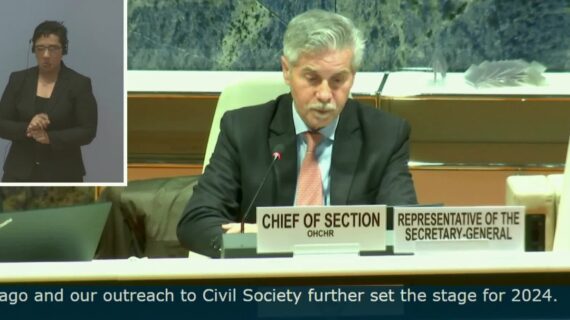The Support Needs Assessment for Persons with Disabilities and their Primary Caregivers
The Support Needs Assessment for Persons with Disabilities and their Primary Caregivers was undertaken in March 2022 following the commitment made by Kenya during the Global Disability Summit (2018) to enhance disability inclusion through the collection of accurate disaggregated data for persons with disabilities.
The main objective of the assessment was to provide evidence on the met and unmet support needs of the diverse persons with disabilities and their family members who provide support in different contexts to inform the design of inclusive social protection schemes.
The assessment was cross-sectional and designed to provide estimates for 10 counties and targeting persons with disabilities aged 2 years and above together with their primary caregivers. The assessment collected both quantitative data from persons with various domains of disability and diverse experiences in terms of the support they receive or require. In addition, focus group discussions with the primary caregivers were conducted to get more information about the target population.
The list of registered persons with disabilities from the National Council for Persons with Disabilities (NCPWD) was used as the sampling frame for the quantitative data. The assessment used a questionnaire for the main survey, which was designed based on the Washington Group Short Set on Functioning, Enhanced set of questions and Child
Functioning Module, and a focus group guide for the focus group discussions.
This report provides the design and methodology as well as the findings from the assessment. The report is divided into 7 chapters: chapter one looks at introduction while chapter two is on design and methodology. Chapter three discusses household socio-economic characteristics; chapter four examines the demographic and socio- economic characteristics of the persons with disabilities; chapter five focuses on support needs for persons with disabilities while chapter six looks at the primary caregivers.
The final chapter 7 provides the summaries of findings, conclusions, and recommendations.
First the results show that 30 per cent of persons with disabilities were heads of households while almost the same proportion (28%) were unable to access the dwelling unit. The main source of drinking water for majority of the households was the stream at 28 per cent while about a fifth of the households used piped water into their dwelling/
yard/plot 59 per cent used covered pit latrine as the mode of human waste disposal.
Over a third (38.6%) of households with persons with disabilities used electricity as their main source of lighting, while firewood was the main source of cooking fuel at 78 per cent. Four in every five (82.2%) households purchased their food while about three in every five households sometimes had no food of any kind to eat because of inadequate resources during the period.
Second, one third of persons with disabilities were youths age 18-34 years and about two thirds had severe disability. Thirty-one per cent of females had severe disability compared to males at 36 per cent. There tends to be a lag in school attendance progression for persons with disabilities especially for those age 18-24 years where only 18
per cent of males and 9 per cent of females were attending.
On the other hand, close to a quarter (24%) of males with disabilities age 25-34 were still attending primary school while more than half of both males (56.8%) and females (52.3%) in secondary school going age (14-17 years) were still attending primary school. In addition, more than half (55.0%) of children with disabilities age 6-13 were out of school due to severe disability and nearly a fifth (17.8%) of children cited financial constraints and lack of special schools as the reason for not attending school. One in every five (20.4%) of persons with disabilities reported to have worked in the seven days preceding the assessment where the highest proportion were engaged in the informal sector (28%) followed by the private formal sector (21%).
DOWNLOAD FULL REPORT







